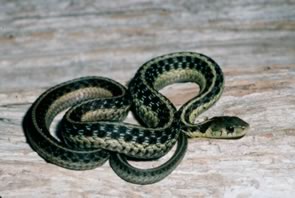
Thamnophis sirtalis
Photo by RW Van Devender
Description: The eastern garter snake has a variable color pattern, but may be identified by a yellow or white stripe running down the middle of its dark back—resembling the “garters” used to hold up socks. On its side, the garter snake usually has a checkerboard pattern of dark squares and stripes. It will often have two rows of black spots running the length of its greenish or yellowish belly. Garter snakes have rough (keeled) scales. They may be distinguished from their cousins, the ribbon snakes, by the presence of dark bars between their lip (labial) scales.
Feeding/Diet: They are most active during the day and feed mostly on frogs, salamanders, fish, and earthworms.
Habitat/Range: Eastern garter snakes are found throughout most of the United States and are one of the most wide-ranging species of snakes in all of North America. Garter snakes usually live in or near wet areas, but can be found in nearly any habitat in North Carolina.
Reproduction: They mate in the spring and in late summer and give live birth to 7–85 young.
Miscellaneous: Garter snakes may bite when handled. Like their relatives the watersnakes, garter snakes will often thrash around when picked up and expel a strong-smelling musk from scent glands at the base of the tail.
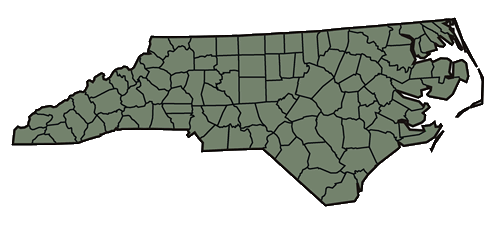
The shaded region represents the range of the eastern garter snake in North Carolina.
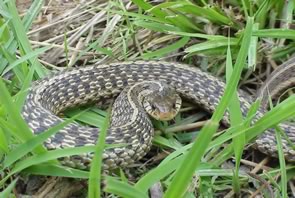
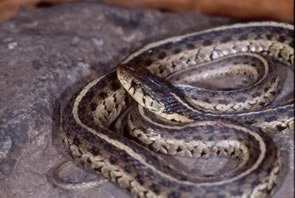
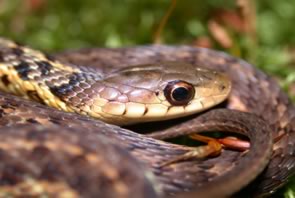
Photo by JD Willson
Photo by Eric Stine
Photo by JD Willson
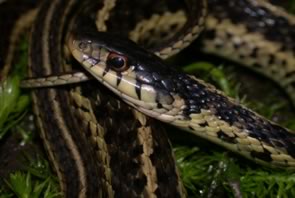
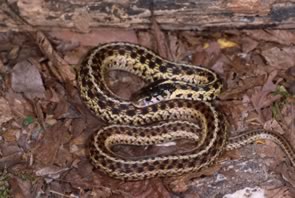

This website created by: J. Willson, Y. Kornilev, W. Anderson, G. Connette and E. Eskew.
For comments or questions contact M. Dorcas: midorcas@davidson.edu.
M. Dorcas homepage: http://bio.davidson.edu/dorcas
Davidson College, Davidson, North Carolina 28035-1719.
Text and maps from: Dorcas, M. E. 2004. A Guide to the Snakes of North Carolina. Davidson College - Herpetology Laboratory, Davidson, NC. – Copyright by Michael E. Dorcas.
Partial Funding for this website provided by a Associate Colleges of the South, National Science Foundation, and Duke Energy.
